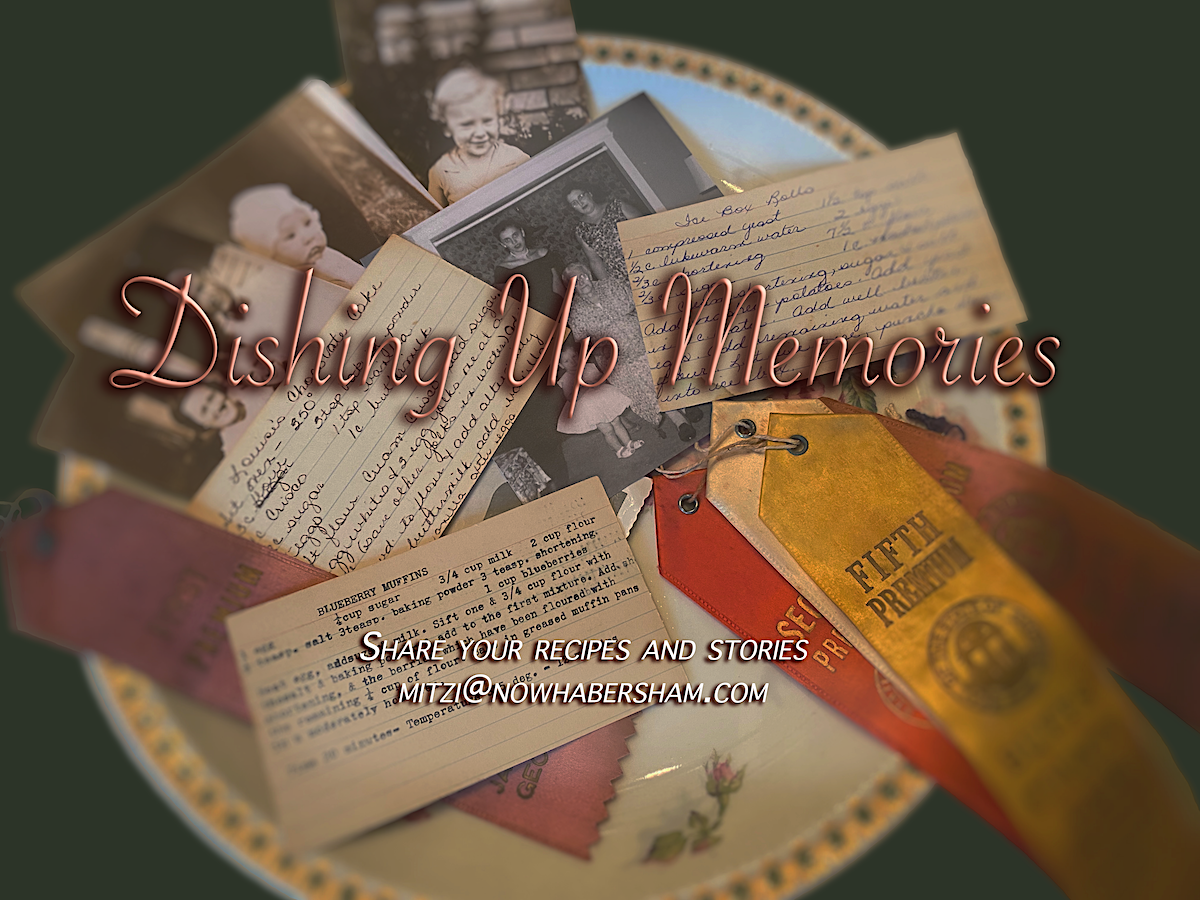
Editor’s Note: We’re reaching back into our archives for one of the most popular recipes to hit our page – brown bread in a can. We first published Margie Williamson’s recipe back on Jan. 13, 2021. Well, here it is again for those of you who missed it and those who’d still like to try your hand at baking it.
As a child in the 1950s, I remember my mom serving bread that came in a can. I always thought the perfectly round slices were really neat. Mom added butter to the slices and served it. I also remember her using two slices of the bread to create a kind of sandwich with cream cheese in the middle. It was delicious.

I haven’t thought about that bread since I was a child, until I was watching an episode of The Great Story on YouTube. The Great Story runs a series of short videos that introduce customs from around the world. The episode I watched was about baking bread with lava in Iceland. The Icelandic baker used a recipe that had been passed down from the 1800s. He then placed the bread dough into a can and buried it in volcanic ash that had lava running under it. The bread was left buried for 24 hours before it was done.
That story reminded me of the brown bread in a can that we were served as children. So I did a little research. The brown bread of my childhood was actually a specialty in the New England area. It was based on recipes adapted by the Pilgrims when they arrived in America in the 1600s.

According to Amanda Balagur in an article on the history of American Brown Bread, the English made thirded bread, using equal amounts of three types of grain–wheat, rye, and oats. Because wheat was more expensive to use, mixing it with other grains made it more budget friendly. When the Pilgrims arrived, they struggled to grow wheat. They planted both wheat and rye, hoping that if one grain didn’t do well in a growing season, the other would. Since corn was already plentiful, colonists created their own thirded bread of wheat, rye, and corn or maize. Colonists made the bread either by baking it on the hearth or boiling it in a pot of water which made a kind of pudding. That pudding bread was what became known as Boston brown bread.
Brown bread in a can came on the market in 1927 and became an inexpensive staple for many American families in the northeast. My mom grew up in Philadelphia, Pennsylvania, and Egg Harbor, New Jersey, with family members throughout the area. I guess that’s how she was introduced to it.

Although it was never served this way at house, brown bread is normally served with blacked grilled hot dogs and baked beans with molasses. To be honest, the plate does not look appetizing to me personally.
Brown bread is still produced in New England, but is difficult to find outside the area. Of course, Amazon sells it and it’s not cheap. Just search for B&M Brown Bread if you’re interested. It comes plain and with raisins.
On the other hand, you can make your own using the method of cooking the bread in a coffee can or loaf pan placed in boiling water for several hours. If you’re interested in trying a new technique and tasting a bit of history, check out the recipe below.

Brown bread in a can:
Ingredients
- Butter for greasing loaf pans or coffee cans
- 1/2 cup (heaping) all-purpose flour
- 1/2 cup (heaping) rye flour
- 1/2 cup (heaping) finely ground corn meal (must be finely ground)
- 1/2 teaspoon baking powder
- 1/2 teaspoon baking soda
- 1/2 teaspoon salt
- 1/2 teaspoon allspice
- 1/2 cup molasses (any kind)
- 1 cup buttermilk
- 1 teaspoon vanilla extract (optional)
- 1/2 cup raisins (optional)
- One metal 6-inch tall by 4-inch diameter coffee can, or a 4×8 loaf pan
This recipe can be made on the stovetop with a coffee can, or in the oven with a coffee can or loaf pan.
For stovetop: Place the steamer rack inside a tall stockpot; fill the pot with water about 1/3 of the way up the coffee can. Turn burner on to medium as you work.
For the oven: Preheat the oven to 325 degrees and bring a large pot of water to boil.
Directions:
- Grease the coffee can or small loaf pan with butter.
2. Mix all dry ingredients in a large bowl (all-purpose flour, rye flour, corn meal, baking powder, soda, salt, and allspice). Add raisins if desired.
3. Mix buttermilk and vanilla together in another bowl. Whisk in molasses. Pour the wet ingredients into the bowl with dry ingredients. Mix well with a spoon.
4. Pour batter into can or pan. Make sure the batter does not go above the 2/3 point of the can/pan. Cover the top of the can/pan tightly with aluminum foil.
5. Prepare to cook with steam:
For stovetop: Place the can or loaf pan in the pot on the steamer rack. Make sure water is deep enough to come up 1/3 of the way on the sides of the can/pan. Cover the pot and turn heat to high.
For oven: Use a high-sided roasting pan that can hold the can/loaf pan. Pour boiling water into the roasting pan until it comes up to 1/3 of the pan’s sides. Place roasting pan into 325 degree oven.
6. Steam the bread on stovetop or in the oven for at least 2 hours and 15 minutes. Check to see if bread is done by sticking a toothpick into the top of the bread. If the toothpick comes out clean, the bread is done. If it comes back with batter on it, recover the pan and cook for up to another 45 minutes.
7. When done, remove the pan from the stovetop or over and let it cool for 10 minutes. Then place the bread on a rack to cool for 1 hour before turning it out of the can/pan.
Slice bread to serve. It can be toasted in the oven with butter, heated in the microwave with butter, or served with cream cheese. This recipe was found at Simply Recipes.

